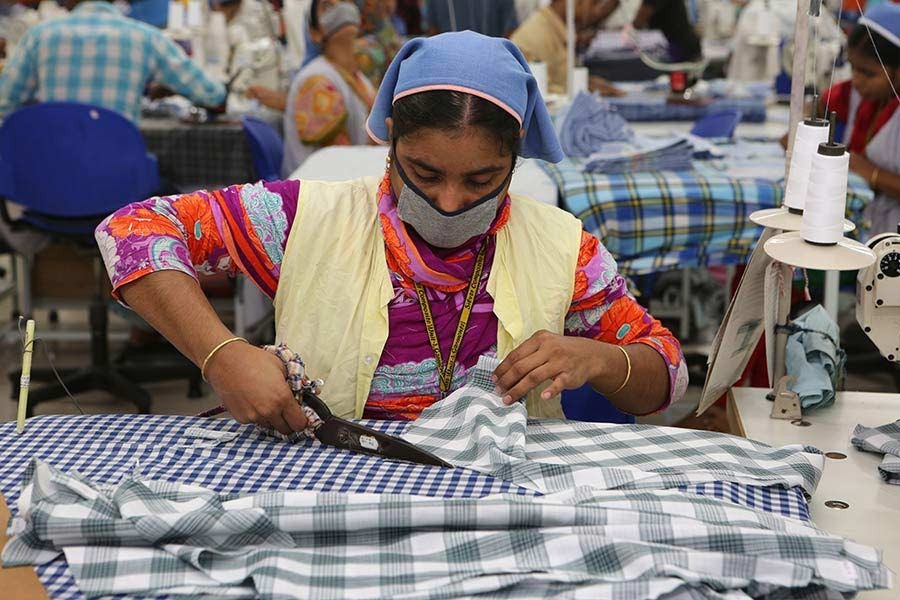
Published :
Updated :

Unlike most other export-oriented manufacturing activities, apparel making is mainly a collaborative pursuit between buyers and exporters. Being essentially a buyers' market, it is the choice and preference of the buyers rather than the exporters' efforts alone that determine the success in overseas marketing. It is more so in our case, as ever since apparel export emerged as a phenomenon in the country decades back, export has remained solely reliant on what the buyers want to procure from here, and so far, this has been to the advantage of the local manufacturers. In fact, this is the case with all the major exporting countries. Hence, it is the tie-up that matters more than anything.
The issue did come up in the past, but not so strongly as now, especially from the global buyers' forum. Months ago at the 37th World Fashion Convention 2022 organised by the International Apparel Federation (IAF) in the capital, Global and local business experts urged an effective collaboration between the global apparel manufacturers and buyers for successful transformation of the industry towards sustainability. They said that without adopting sustainable technology, apparel exports to the European Union would be adversely affected after 2030 due to the EU Green Strategy. Speaking on the occasion, Dirk Vantyghem, director general of EURATEX, the European Apparel and Textile Confederation, said the new strategy of the EU has set out the vision and concrete actions to ensure that by 2030 textile products placed on the EU market are long-lived and recyclable, made as much as possible of recycled fibres, free of hazardous substances and produced in compliance with the norms of social rights and environment. International Apparel Federation president Cem Atlan echoed the same feeling saying that a true collaboration between the apparel buyers and manufacturers could address the major challenges global clothing industry was facing and bring successful transformation in its supply chain. The IAF president said that apparel makers felt the squeeze from higher costs and lower demands while order cancellation, piling up of stock-lot, and big discounts show the ineffectiveness resulting from a lack of desired collaboration. 'We realise we need to come together as an industry to solve our problems. The major challenges of our industry today can only be realistically met when there is true collaboration between buyers and manufacturers,' Atlan said. In the same vein, Bangladesh Garment Manufacturers and Exporters Association president Faruque Hassain said, 'To deal with the sustainability issue, we need to take several strategies where one of the crucial strategies is improving efficiency through technological innovation. For that, we need to focus on skills development and adoption with the 4IR.'
So, it is the very sustainability of the country's number one export-earner that might be at stake in the absence of smart collaboration with global buyers. Having learnt the major changes in the EU procurement modality (as stated above), things indeed look challenging for Bangladesh to keep going with its most valued global market. Clearly, it's not about maintaining the number-two or third position in the market, or even protect against any major slide, but keeping the business going in a new perspective. No doubt, this is a transition phase for Bangladesh's exports to the EU, with some breathing space. According to reports, it is not until 2030 that the new procurement mechanism accompanied with compliance norms will steer EU import of apparels from all over the world.
So long, collaboration or partnership with buyers meant receiving overseas market demand for products in various market segments, trends in consumer choice and preferences, pricing and so on. Now that collaboration has emerged as a predominant activity to help negotiate the transition period, that among others includes technology transfer, it is critically important for local exporters to gradually prepare for things in not too distant a future.
Exports to the EU apart, there is already a growing need for partnership with the major buyers. During the pandemic, supply chain disruption had caused severe shocks to international trade, and apparel export being reliant on a number of global supply chains, the after-effect is still to go. Experts are of the opinion that partnership between the major buyers and local exporters can put things right, if the gaps could be properly identified and addressed. The quality of buyer-supplier partnerships in global supply chain has only slightly improved since last year, indicating that suppliers are still feeling the impact of disruption more than two years on from the onset of the Covid-19 pandemic, according to the report on Better Buying Partnership IndexTM (BBPI) score for 2022. "Buyers cannot let up their focus on maintaining business relationships with suppliers," it says, recommending strong communication practices as a key tool in buyer-supplier partnerships as the industry continues to ride out the aftershocks of Covid-19.
The need for close tie-up thus cannot be over-emphasiseded. In fact, so far, what the Bangladesh apparel sector has been able to build as its foundation to work on, is largely due to the close tie-up with the global buyers. However, with competition on the rise and procurement modality set to undergo a major shift, the partnership between the exporters and the global buyers calls for more proactive engagement for the mutual benefit of both.
wasiahmed.bd@gmail.com


 For all latest news, follow The Financial Express Google News channel.
For all latest news, follow The Financial Express Google News channel.